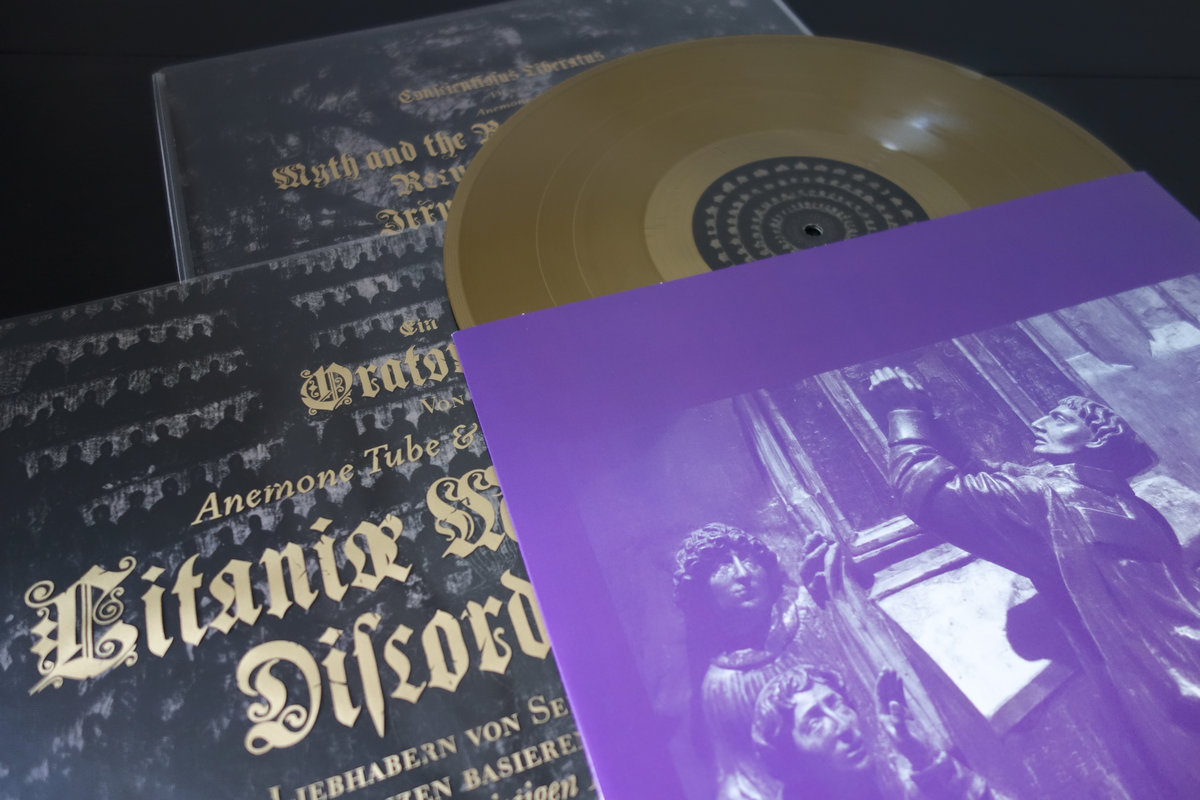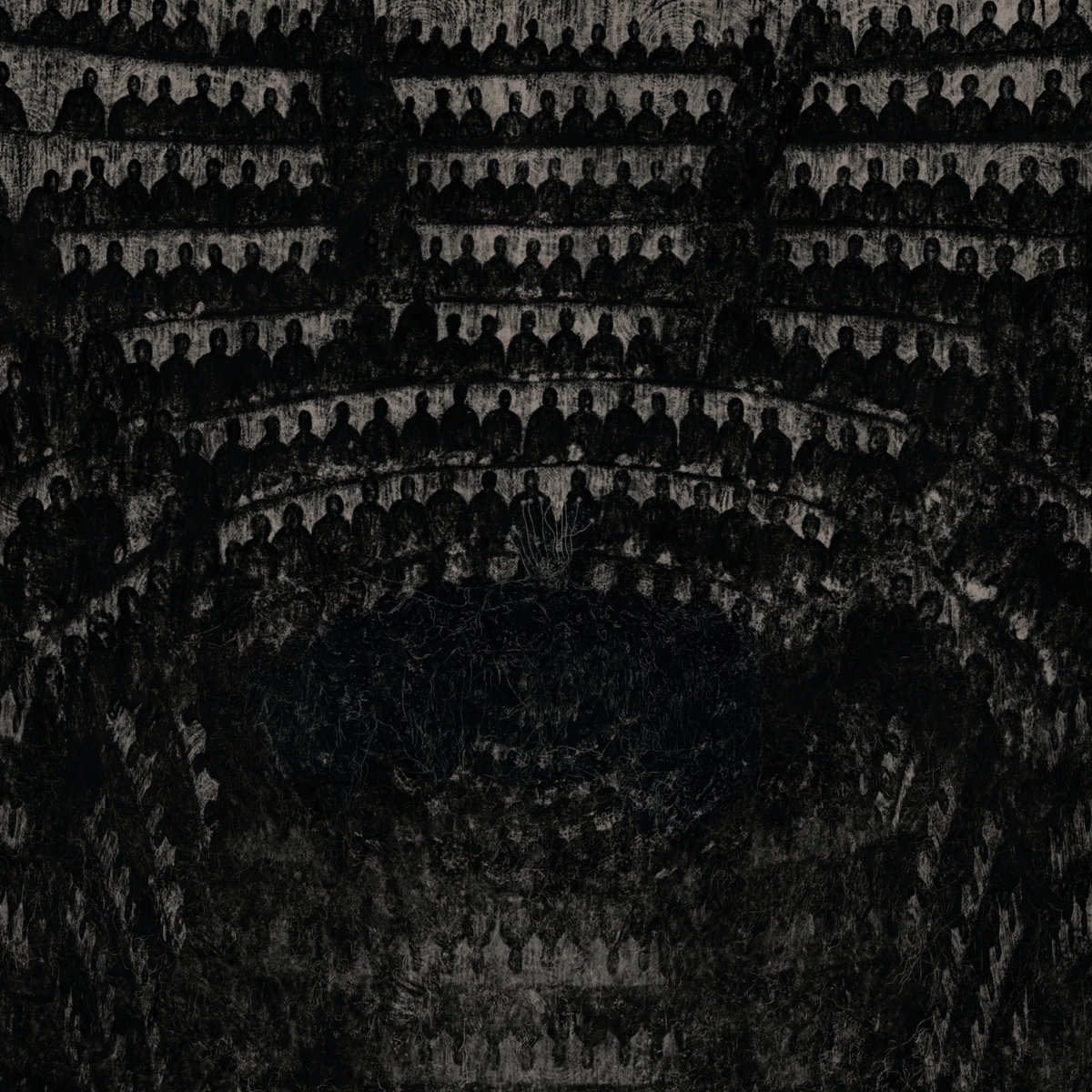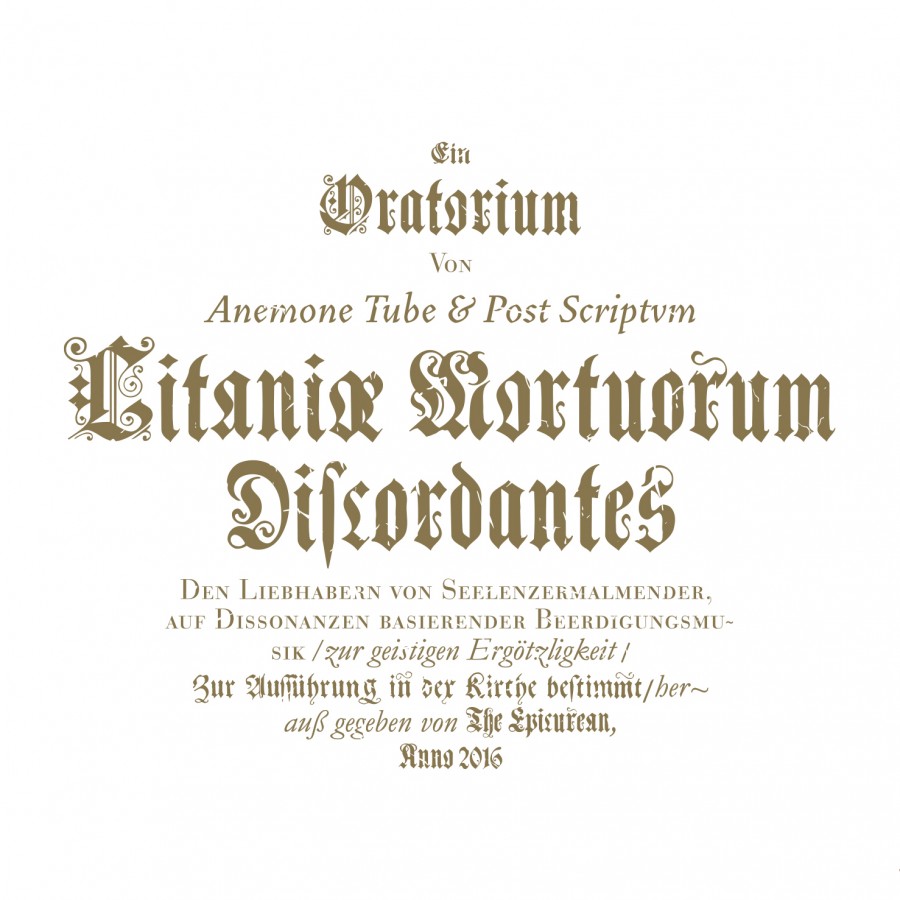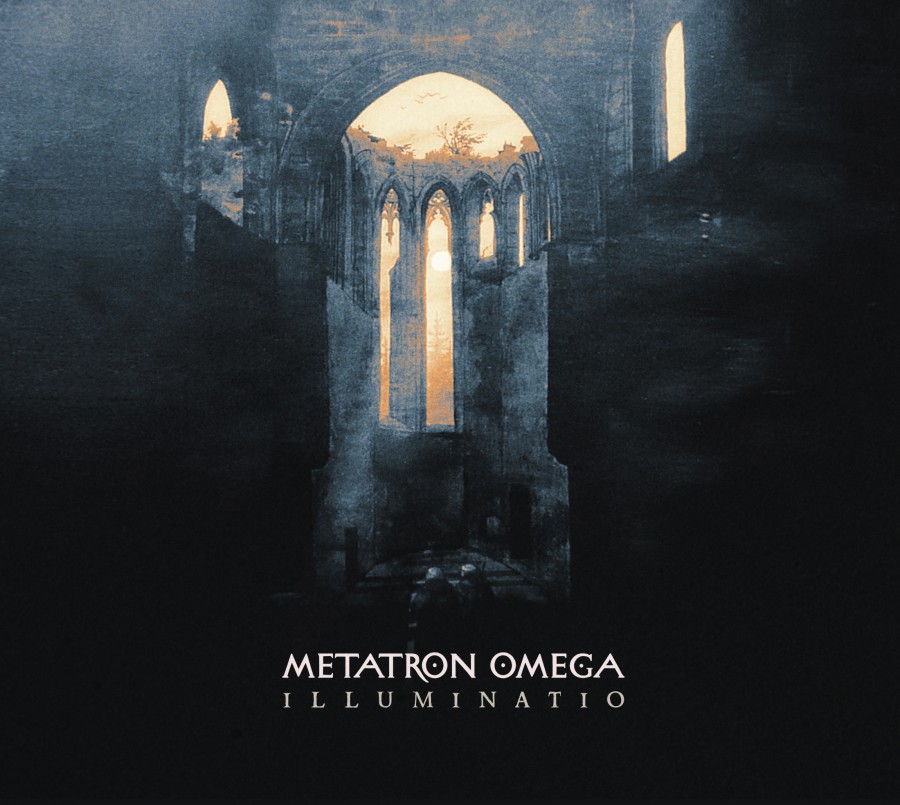Artist: Anemone Tube / Post Scriptvm
Album: Litaniæ Mortuorum Discordantes
Release date: 1 December 2016
Label: The Epicurean / La Escencia
Tracklist:
01. Anemone Tube – Myth and the Relation to the World
02. Anemone Tube – Recueillement (Sa Propre Mort)
03. Anemone Tube – Irruption of the Whore
04. Post Scriptvm – Buried in Fabula
05. Post Scriptvm – Dark and Nameless Gods
06. Post Scriptvm – Laterne D’Horreur (Lantern of Horror)
Anemone Tube & Post Scriptvm are two well known and respected post-industrial projects which have been releasing music on various labels for well over a decade each. In 2012, The Epicurean label was formed, releasing many of the subsequent works by both of these musical projects. When listening to either Anemone Tube or Post Scriptvm, followers will usually expect deeply complex soundscapes which often fall on the harsher spectrum of the dark ambient, power electronics or death industrial genres. Litaniæ Mortuorum Discordantes will likely be a surprising release for many, as the sounds on this album are vastly subdued in comparison to the usual sonic intensity of either project.
As a fan of dark ambient that dabbles in death industrial and power electronics, I found Litaniæ Mortuorum Discordantes to be an exceedingly interesting album. The theme of this opus combined with the funereal dreary soundscapes immediately attracted my attention. Early on in my considering this release for review, I realized that the vinyl version would likely be the optimal listening format for such a work. Upon purchase of that vinyl, I can say that this theory has proven accurate, and I highly recommend any reader that enjoys the themes and/or sounds herein to consider purchasing a copy of the incredibly well-crafted vinyl version of this release. The album would be classified as a “split release”, but I urge listeners to think of this as one whole unified musical experience. The album progresses through the six tracks in a way that feels natural and brings the vision of both artist to fruition without a clash of interests or jarring shift in structure.

Litaniæ Mortuorum Discordantes takes its inspiration from a classical style of ritual music which, instead of inducing a positive euphoria in its Christian listeners, induced feelings of “dread, existential anxiety and feelings of death and decay”, as these musicians aptly describe it. Anemone Tube & Post Scriptvm decided to create their own ‘Litaniæ Mortuorum Discordantes’ or, in English, ‘Discordant Death Litanies’ as this seemed particularly appropriate for their musical tastes combined with our infatuation and mad-dash toward an apocalyptic end-time.
Anemone Tube takes the first half/side of the album. Their music, as alluded to previously, is extremely subdued in comparison to the works which I have come to recognize as representative of their trademark sound. The first track “Myth and the Relation to the World” is quite simplistic, consisting of the sounds of some distorted chants and haunted choirs backed by peaceful yet brooding drone-work. It is followed by the equally subdued “Recueillement (Sa Propre Mort)”, which translates to something like Contemplation (His/Her Own Death) in English. This track again features a slowly shifting drone-scape which seems to originate from some lonely-sounding horn. Both of these tracks leave ample room for the listener to become lost in thought, pondering the meaning of life… and death, or to simply meditate on the sounds.
“Irruption of the Whore” is the first move into the more anxiety driven, disturbed soundscapes, which will fully blossom on the Post Scriptvm half of the release. The track consists of bells which shift and distort, a hollow airy drone floating subtly in the background. As the intensity increases further into the track, we hear raspy noises and sounds akin to haunting voices. Chains seem to rattle in the background as other industrial noises combine to form what almost could be considered a percussive beat. This beat, as we move over to the second half, will translate into a beating heart, which provides a foundation for the first of the Post Scriptvm tracks.
Post Scriptvm will gradually build upon the intensity that was introduced in “Irruption of the Whore”. “Buried in Fabula” starts with a contorted passage which seems to have religious undertones. A heartbeat builds the foundation, before drones enter the fold, which blend miraculously well into the sounds of haunted choirs. Feedback and white-noise moves in and out of the mix adding a further sense of anxiety and dread. The sense of increasing anxiety bleeds into the following track, “Dark and Nameless Gods”. Spoken word continues as well from the previous track, with sparse words which are hard to separate from the mix, but give an added measure of darkness and dread to the composition.

The final track, “Laterne D’Horreur”, which translates to English as “Lantern of Horror”, is certainly the apex of Litaniæ Mortuorum Discordantes. This track continues to descend into darkness and apocalyptic despair. The sounds have an almost futuristic sort of sci-fi feel to them. Field recordings of what sounds like wolves howling cut unexpectedly into the mix. Contorted synths give an effect as if they are raspy gasps for air from some dæmoniac creature. The track slowly subdues and descends into a harsh noise, that never becomes prominent as it mingles with what sounds like cries and cats screaming in terror. This may all sound as if it has become absurd, like some 50s horror film, and indeed it does feel reminiscent of something akin to this, yet it manages to keep its intended atmosphere as well as its integrity throughout this strange experience.
Litaniæ Mortuorum Discordantes is clearly a triumph for these two veteran artists. The album succeeds in its attempts at creating an atmosphere of religious blasphemy, a kind of funeral music for the dark-minded and irreligious. For a veteran listener of dark ambient and other weird and “spooky” music, I’m delighted to say that Litaniæ Mortuorum Discordantes manages to instill an unsettling feeling of dread and anxiety in my soul, a feat that is not often achieved. Listen to Litaniæ Mortuorum Discordantes in the midnight hours, alone in the dark, incense burning and mind open to the dark entities of the night. Or, if it is possible, play this in a cathedralic setting, and witness the utter disgust and terror of some unsuspecting clergy, the effect should be a delight to witness.
Written by: Michael Barnett



